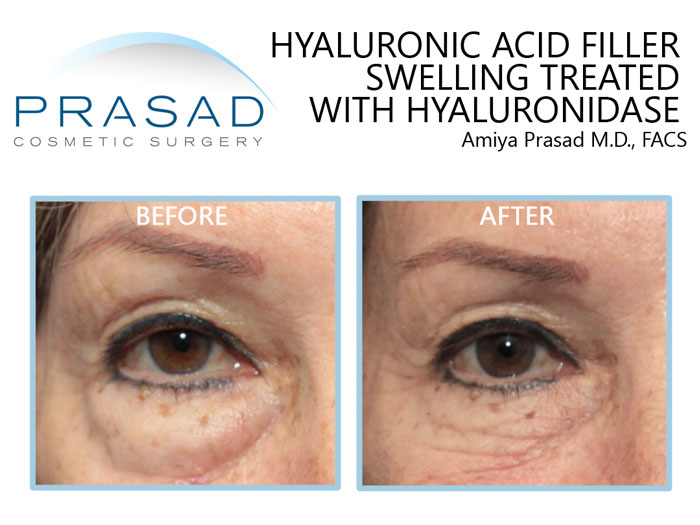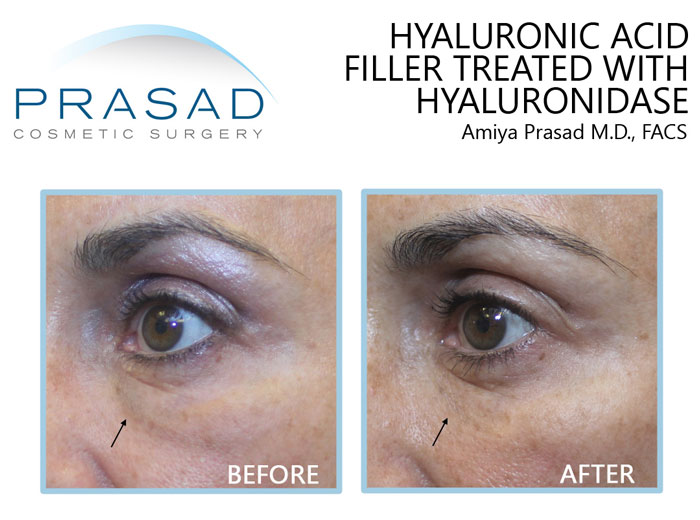Under Eye Fillers Gone Wrong. What to Do?

The use of cosmetic fillers, particularly under eye fillers, has surged in popularity for treating issues like eye bags and under eye hollowing. However, many individuals remain unaware of the potential complications associated with these treatments. As a trained and experienced eyelid specialist, I often encounter patients facing adverse effects, such as under eye fillers gone wrong.
Many people are unaware that fillers can lead to results that may be less than desirable. There are numerous cases where tear trough filler has gone wrong, resulting in swollen pockets under the eyes, or bad under eye filler outcomes that can significantly affect one’s appearance.
While fillers can provide effective results for some patients, they are not universally suitable. The misconception that fillers are an easy fix can lead to situations where under eye fillers ruin faces, contributing to issues such as excessive swelling or the formation of lumps.
How do you fix under eye fillers that have gone wrong?
When someone is dissatisfied with their under eye fillers, the option for dissolving under eye filler using hyaluronidase can be a viable solution. Patients often come in expecting instant results; however, it is essential to understand that swelling may persist after the filler is dissolved. This can often lead to concerns about the original filler not dissolving or even encapsulation, where the body forms a barrier preventing natural metabolization.
Many patients who seek my help have experienced considerable distress, often citing cases where under eye fillers ruined their face. Documenting their journey from dissatisfaction to resolution, many report significant transformations following the dissolving of under eye fillers.


Conclusion
If you’ve experienced issues such as under eye fillers gone wrong, the first step is often to explore options for dissolving the filler.
As a renowned oculoplastic surgeon with over 30 years of experience in both surgical and non-surgical treatments, I am committed to providing personalized solutions to my patients. My approach focuses on understanding individual needs, ensuring safe and effective treatment options are available. If you’re struggling with the results of bad under eye filler, I invite you to consult with me to explore the best possible solutions tailored to your situation.
Explore our under eye filler before and after gallery to see real results from patients who’ve addressed under eye problems under my care.
Under Eye Fillers, NYC, and Long Island, New York
Dr. Amiya Prasad is a Board-certified cosmetic surgeon and a Fellowship-trained oculofacial plastic surgeon. He’s been in practice in Manhattan, and Long Island for over 30 years. As an eyelid specialist, Dr. Prasad also performs revision work for eyelid surgeries originally performed by other doctors. Patients come to us from all over the world.
Ready to restore confidence in your appearance? Schedule a consultation today to discuss your options, fill the form below, or contact any of our offices: (212) 265-8877 for Manhattan, (516) 742-4636 for Garden City, Long Island, or (703) 356-1336 for Vienna, Virginia.

